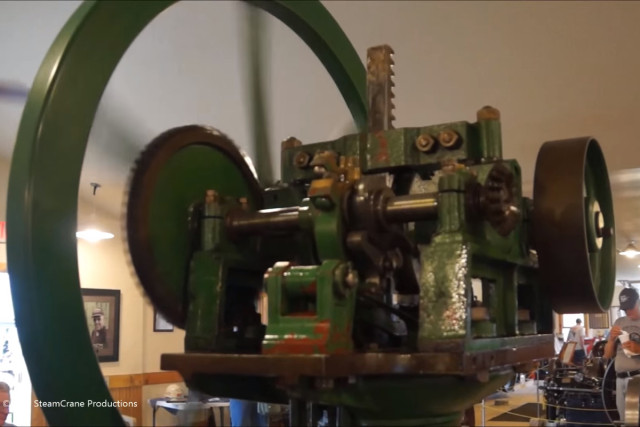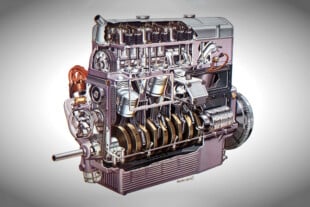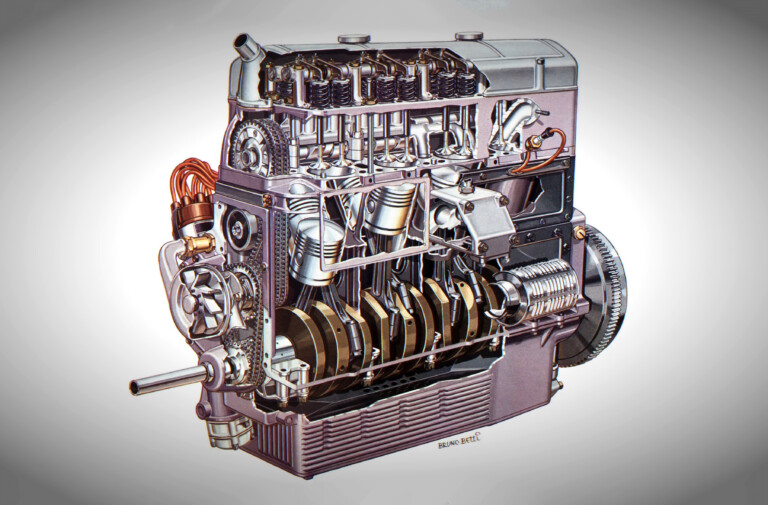Today, extremely powerful piston engines are taken for granted; there are factory-designed V8 powerplants producing upwards of 700 horsepower through the use of a supercharger. It’s easy to overlook the engineering advancements of entrepreneurs from days gone by that make these modern-day engines possible.
While modern engines look and operate nothing like their early counterparts, it’s always interesting to look back at some of the designs that were engineered in the search for mechanical power. One such idea — and quite possibly the most historically important — is the 1867 Otto-Langen atmospheric engine, designed and produced by Nicolaus Otto and Joseph Langen between 1864 and 1878. This arrangement was an important predecessor to the four-cycle ignition engine later developed by Otto in 1876.
The compressionless engine uses an indirect-acting free piston, is fueled by lighting a gaseous mixture, and develops its power from atmospheric pressure rather than from compression.
There are a number of engineering advancements to note with the Otto-Langen design.
Firstly, the roller-wedge clutch that engages with the downward movement of the piston and rack assembly. The rack is connected to the piston, and houses the directional clutch, permitting movement in only one direction.
Of secondary importance is the free piston — which is not connected to the main shaft — and travels as far as the combustion event can propel it. There is also a non-continuous rotating camshaft and follower that cycles at one-revolution intervals, whereupon the piston drops to its lowest point within the assembly. When this happens, a spring-loaded pawl engages a ratchet to spin the shaft, and as the revolution completes, a tail on the pawl catches a level to disengage it and end the cycle.
 Under negative pressure conditions, the gas and air are introduced into the cylinder through vertical movement of the piston. The combustion chamber is contained within a sliding valve assembly, and as the piston sucks in the air, the slide valve closes and captures a flame from an external pilot inside, and exposes it to the air/fuel mixture to create ignition.
Under negative pressure conditions, the gas and air are introduced into the cylinder through vertical movement of the piston. The combustion chamber is contained within a sliding valve assembly, and as the piston sucks in the air, the slide valve closes and captures a flame from an external pilot inside, and exposes it to the air/fuel mixture to create ignition.
Subsequently, the piston is forced upward by the combustion event past the expansion point of the combustion. As the piston falls, a combination of its weight and atmospheric pressure creates the power stroke, which occurs over the first half of its travel downward. The energy of the piston is transmitted to the main shaft through a gear and the directional clutch.
The engine design won the grand prize at the Paris Exhibition in 1867, and was the most efficient gas engine ever produced to date at that time. It’s amazing to see one still in operation today.

















